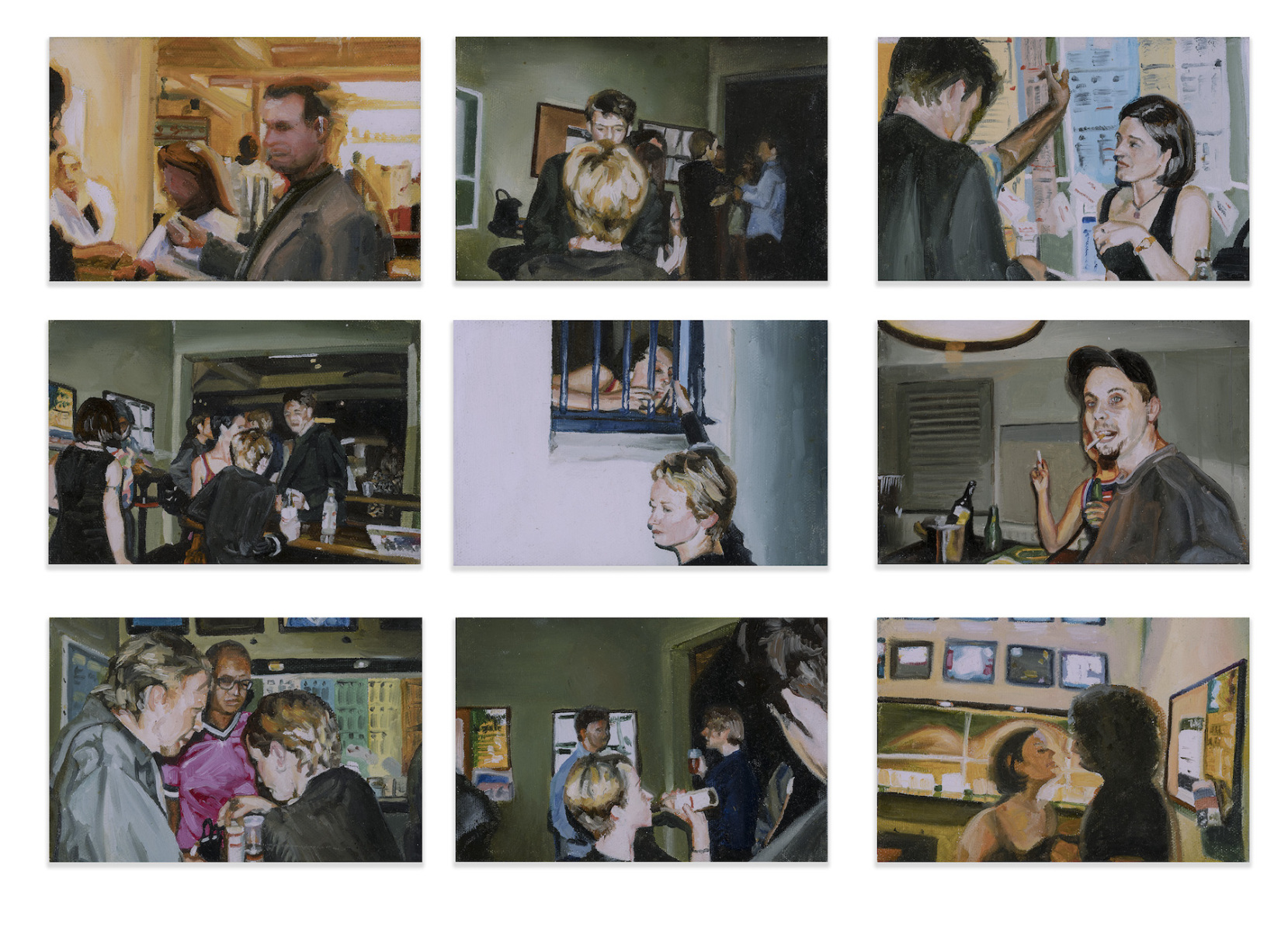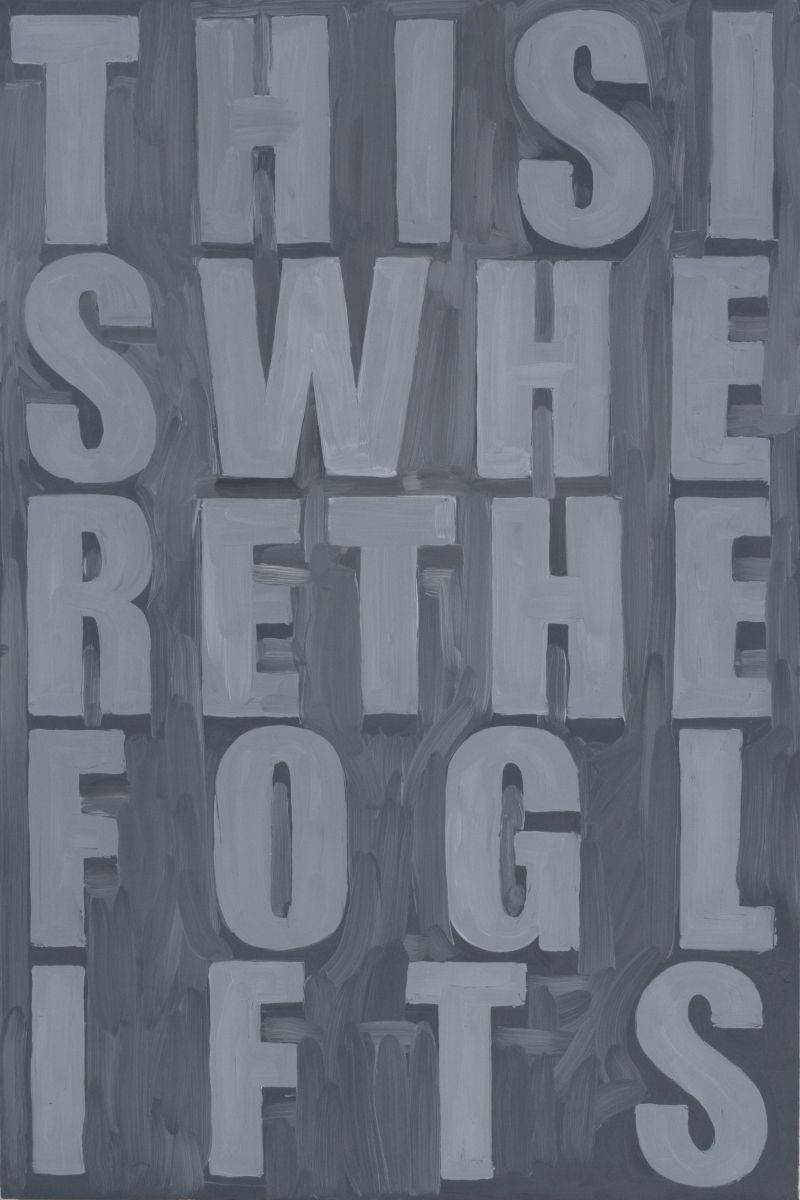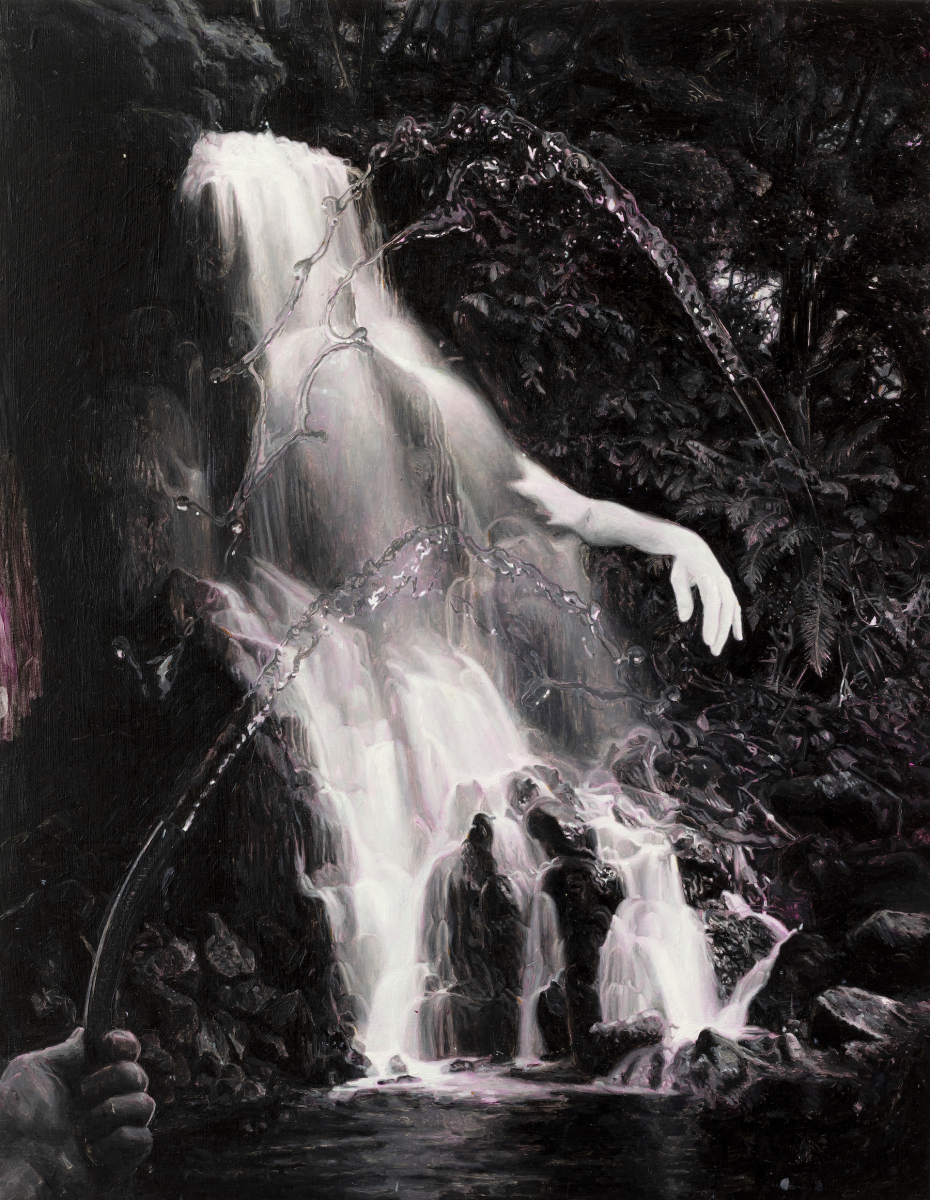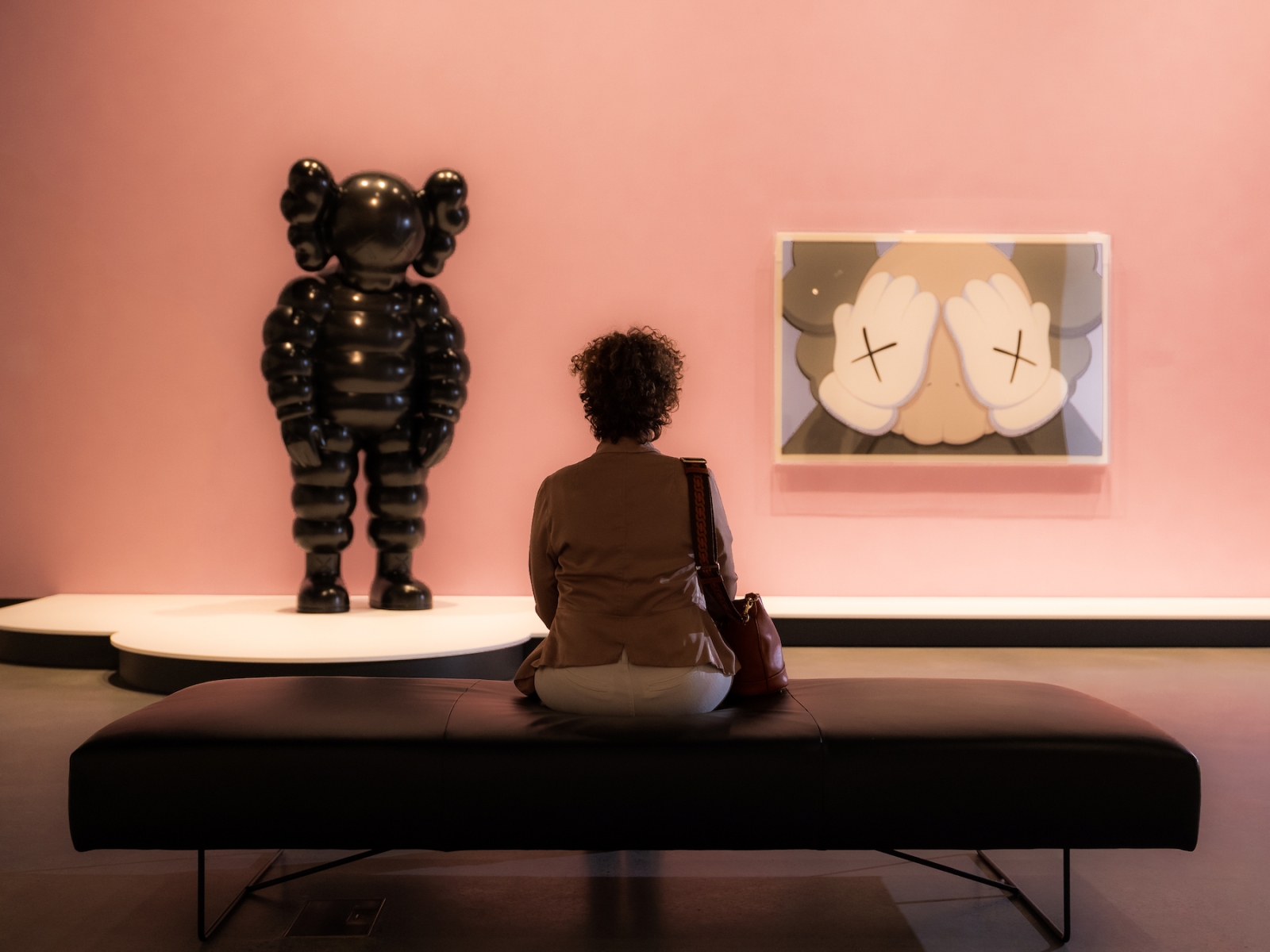Every piece of art, no matter the style or intent, could be considered self-portraiture, as a reflection of the artist who created it. Each artwork is a single point in the cloud of information about that artist. And the more data you have, the clearer the picture of that artist. Biograph is the first survey exhibition of Julie Fragar’s work, and also, as the title of the show suggests, a portrait of an artist coming to grips with the experiences of life, the passage of time, and the inevitability of death.
As you enter the space, you’re greeted with an actual self-portrait of Fragar. It’s arresting, meets your gaze, and almost dares you to keep walking through the exhibition to explore the artist’s deeper elements. A good portrait is far less about what a person looks like, and more an exploration of the substance of their being. By positioning this work at the entrance to the exhibition, it’s like this first painting says: “You’ve seen what I look like, now get to the important stuff.”
Much of Fragar’s work speaks with a photographic vocabulary. Images are cropped, overlaid, and manipulated to make up dream-like compositions or images of the subconscious. The works use a palette of colours reminiscent of photographic time periods; some seem like 1970s slides, while others look like cheap early 2000s disposable cameras, or 1890s tintypes. These are interspersed with text-based paintings with painterly, hard-edged san serif fonts, antithetical to the complex, image-driven works.
The exhibition’s curator, Jonathan McBurnie, made a real point of the fact that the works are hung thematically, not chronologically, but it’s hard to escape the thematic changes over time when showing a twenty-year plus practice. There are groups of paintings from different phases of Fragar’s career that speak very differently from others.
The older works (by a younger artist) feature images of everyday life, love, and tragedy. For example, The Gary Owen (Rozelle) (1999), is a series of nine small paintings that show candid moments of social gatherings with fresh-faced party-goers drinking, smoking, and looking for ‘love,’ which hangs right next to Flagyl, New Years Eve 2000 (2001), a large-scale painting of a young woman laying in a hospital bed, looking directly at the viewer. These works seem to be an immediate response to and processing of the visceral comings and goings of a young adult life.
Skip forward almost two decades and an older Fragar is now producing ghostly, multiple-exposure-like paintings that conjure the feeling of a recurring dream you have when you’re too sick to get out of bed. These are paintings that are made up of intangible things, like family connections, distant memories, and thoughts of the beyond. Through the portrait that is Biograph, you can track Fragar’s journey from analytical maker to investigator of the subconscious.
One stop on the exhibition’s journey is THISISWHERETHEFOGLIFTS (2008). This painting is honest and declarative. It marks a moment in time when, through a meditative process, the artist clarified and freed her mind of a ‘fog,’ and at the same time it is the actual object of that meditation. You can see the physical evidence of this in the artist’s brushstrokes and within the care that make up both the artwork and Fragar’s clarity and state of mind.
At the other end of the analytical-subconscious spectrum is Rain on your own Parade (2021). This fever-dream of a painting shows a waterfall in the middle of a dense rainforest, somewhat anthropomorphised by a glowing deity-like hand. The water flows over rocks that remind the viewer of kneeling pilgrims humbling themselves at the feet of a once powerful relic. Superimposed over this are the laminar flows of a couple of backyard hoses. There’s a mix in this work of imagination, Victorian photographic trickery, and a primal connection to worshipping the sublime wonder of nature. Moreover, this painting carries the air of authority of something deeper, just out of reach of the uninitiated.
I spoke with Julie Fragar at the exhibition’s opening event. Our conversation was easy-going, wide-ranging, and fun. When I asked her what her favourite pieces were in the exhibition, she replied the works that have rawer, grittier aspects because they have the most immediacy. Her response centered on the emotive aspects of her work, not their technical construction nor beauty (which is abundant). Julie Fragar: Biograph is an accurate portrait of a complex, humble, intelligent, and honest artist who continues to push at the forefront of contemporary painting, not only in Queensland but in Australia and beyond.
Ken Leslie is a teacher, artist, and writer who currently lives and works in Rockhampton, Central Queensland.










